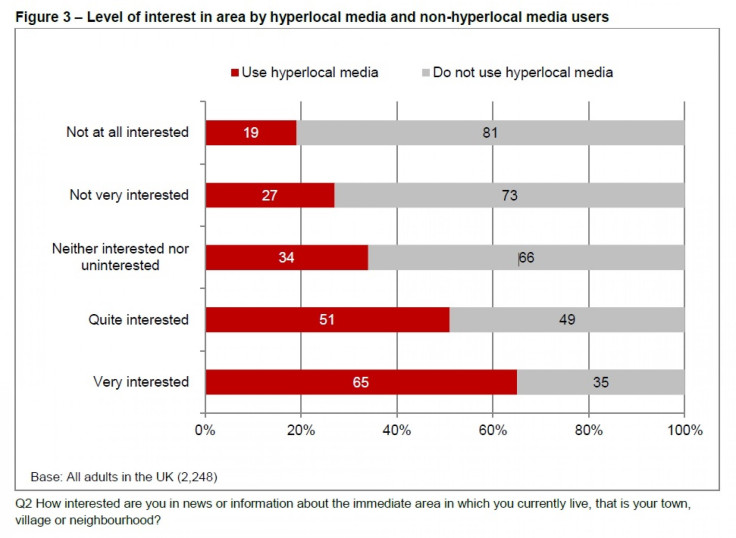Can Your iPad Save Hyperlocal News? In Britain, It Just Might


In the U.K., the rise of smartphones and tablets could give a boost to a long-struggling segment of the media industry: hyperlocal news.
That’s according to a new research report commissioned by Nesta, a British technology-research organization that began a review of the U.K.’s hyperlocal landscape in March 2012. Conducted by Kantar Media and based on a January survey of 2,248 adults in the U.K., the study found that consumer demand for hyperlocal content is growing along with the explosion of iPhones, iPads and other smartphones and tablets.
According to the study, 60 percent of respondents are “very interested” in accessing online hyperlocal content -- that is, information about the immediate area in which they currently live -- while only 19 percent said they were “not interested at all” in such content.
Of those who access hyperlocal media online, just over half say they consume more than they did a year ago. But the increase in use, the study found, is more prevalent among users who own a smartphone, tablet or other mobile device. Tablet users represented the biggest increase, with 60 percent of tablet owners saying they consumed more hyperlocal media now than they did a year ago. Smartphone users followed closely at 59 percent, while laptop or notebook users came in at 56 percent.
Conversely, lovers of old media have been somewhat slower to warm up to online hyperlocal news at all, with 57 percent of local newspaper readers saying they do not access such content. But given the ongoing growth of mobile devices throughout the U.K. -- mobile data traffic there grew by 70 percent in 2012, according to Cisco Systems (NASDAQ:CSCO) -- that number is destined to change.

In his research notes, Jon Kingsbury, director of creative economy for Nesta, wrote that one way hyperlocal news outlets could take advantage of the trend is by implementing geotagging technology, thereby ensuring that their area-specific content is easier to find on GPS-enabled mobile devices.
“Our findings suggest that partnerships between different sectors of hyperlocal media, and use of geotagging may be important for improving the visibility of some of forms of hyperlocal media,” Kingsbury wrote.
However users are accessing hyperlocal content, news that they are doing so in greater numbers should come as no small comfort to publishers. While the hyperlocal segment generated enormous hype a few years ago, when AOL (NYSE:AOL) bought the locally oriented Patch Media, sustainable business models have proved elusive in the traffic-oriented world of online media. Last year, the Pew Research Center’s Project for Excellence in Journalism published a report acknowledging that the ecosystem behind local news is more complex than hyperlocal advocates had initially realized.
Nevertheless, the shift from PCs to mobile devices will present a challenge to digital advertisers everywhere, as consumers fundamentally change the way they interact with their screens. When the smoke clears, hyperlocal news publishers could find themselves in a better position than anyone to navigate the brave new landscape. In the world of digital media, stranger things have happened.
Read Nesta’s entire hyperlocal media study here.
Got a news tip? Send me an email. Follow me on Twitter: @christopherzara
© Copyright IBTimes 2024. All rights reserved.






















